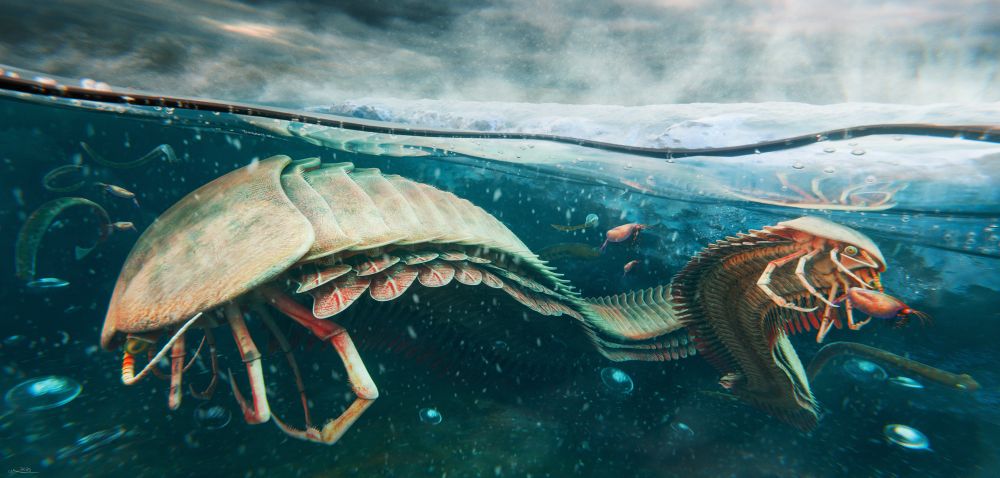


Perhaps a snapshot into the courtship and reproduction of these ancient arthropod ancestors?

Perhaps a snapshot into the courtship and reproduction of these ancient arthropod ancestors?
Depicted are from top left to down right:
#Palaeocampa
#Nektognathus
#Wudingloong
#Mirasaura
Tags: #paleoart #prehistoric #prehistoriccreatures #paleozoic #prehistoricanimals #peternickolaus #paleopete #dinosaur
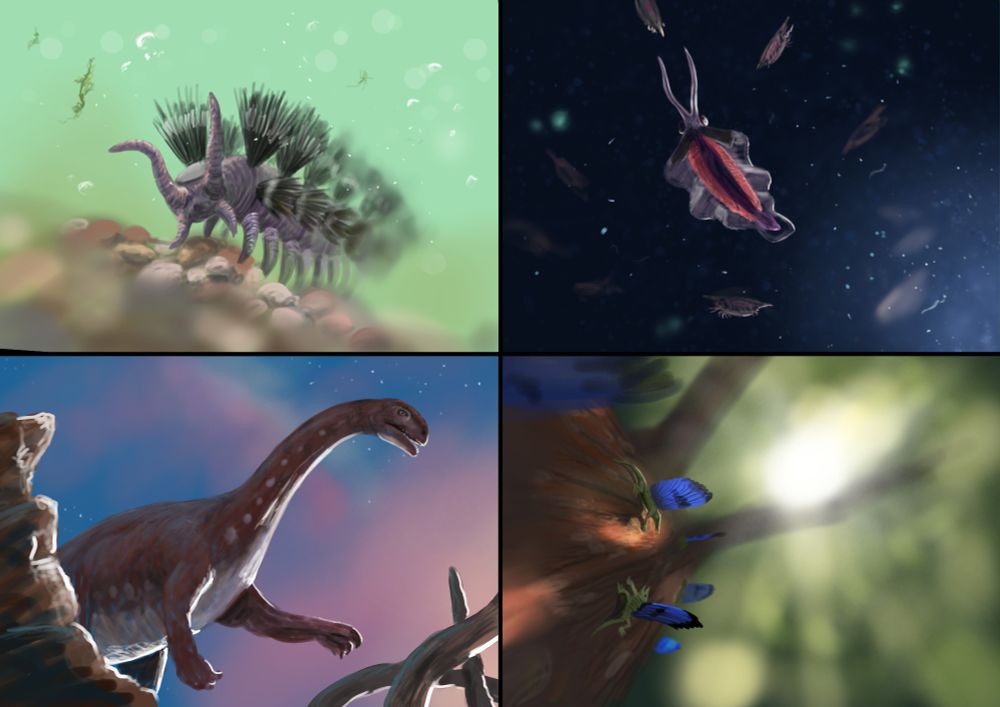
Depicted are from top left to down right:
#Palaeocampa
#Nektognathus
#Wudingloong
#Mirasaura
Tags: #paleoart #prehistoric #prehistoriccreatures #paleozoic #prehistoricanimals #peternickolaus #paleopete #dinosaur
Palaeocampa, Nektognathus, Wudingloong, Mirasaura
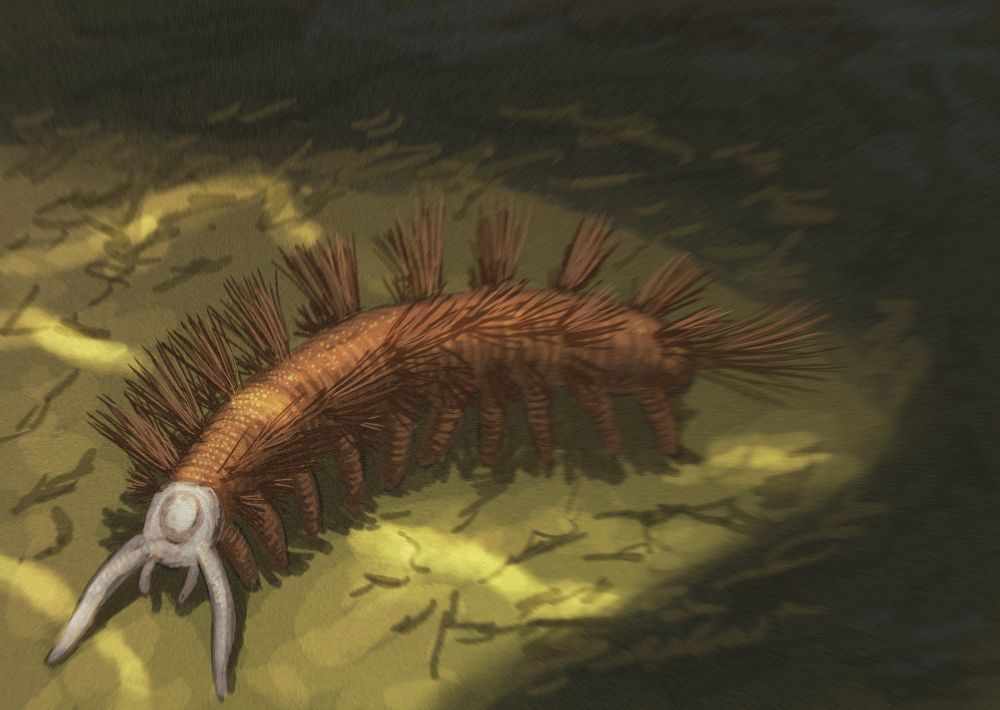

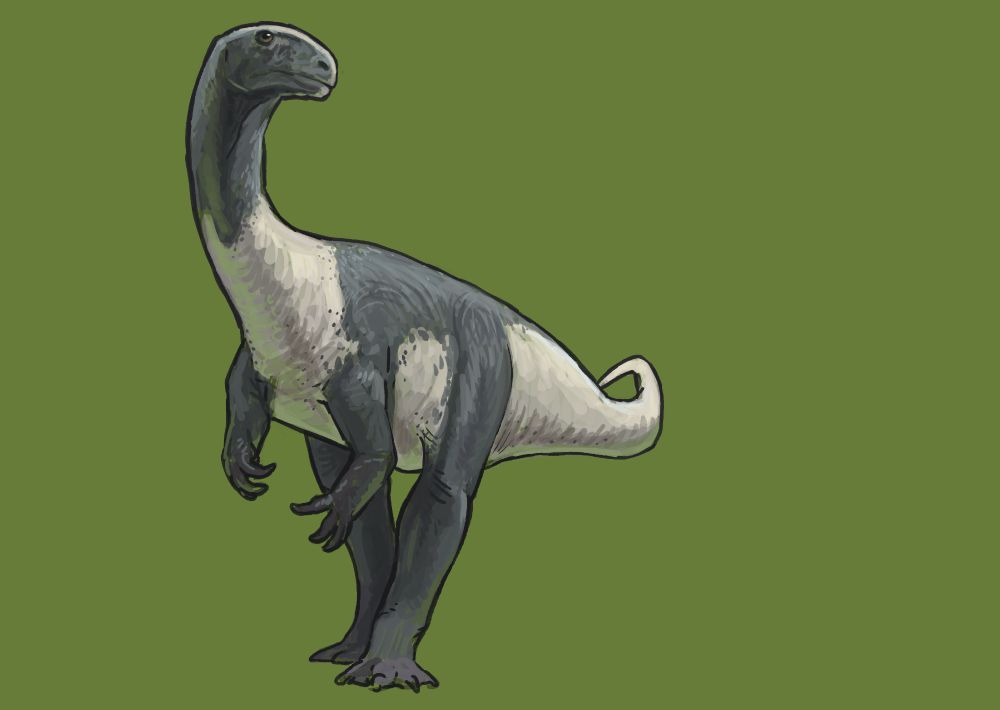
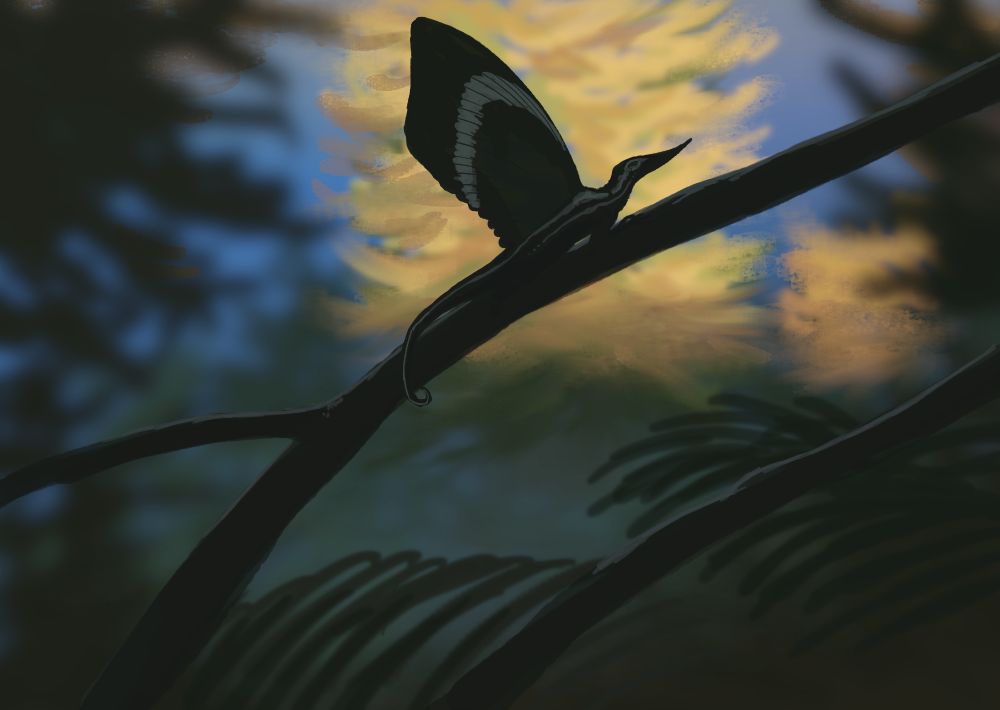
Palaeocampa, Nektognathus, Wudingloong, Mirasaura



Palaeocampa, Nektognathus, Wudingloong, Mirasaura.
#paleostream #paleoart #sciart #art




Palaeocampa, Nektognathus, Wudingloong, Mirasaura.
#paleostream #paleoart #sciart #art
Palaeocampa is an exceptional lobopodian - it lived in rivers and lakes, bristled with thousands of poisonous spines, and more. 🧵
Open access: nature.com/articles/s42...
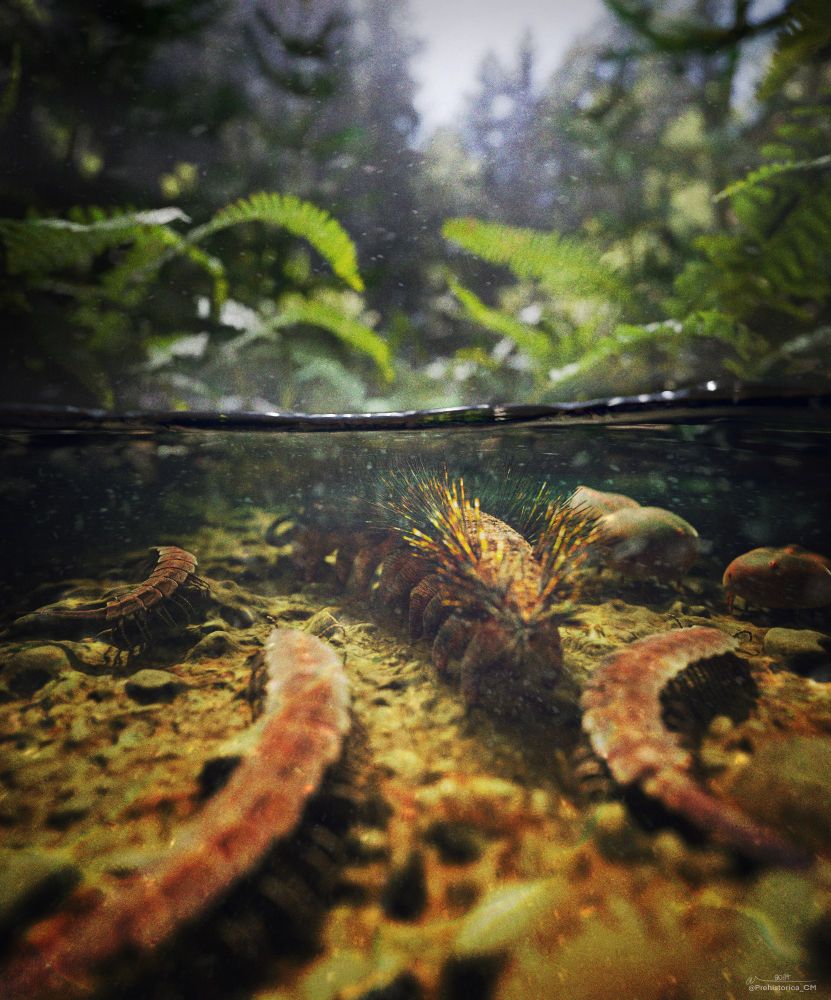
@prehistorica.art
www.nature.com/articles/s42...

@prehistorica.art
www.nature.com/articles/s42...
They would definitely be fun to keep in an aquarium!
They would definitely be fun to keep in an aquarium!
www.nature.com/articles/s42...

www.nature.com/articles/s42...
In Carboniferous lake of Montceau-les-Mines, Platysella descusi is trying to bother Palaeocampa anthrax. Palaeocampa curls up and bristles up in defense. Two Palaeocaris secretanae and single Nyranerpeton montceauense are swimming nearby.

In Carboniferous lake of Montceau-les-Mines, Platysella descusi is trying to bother Palaeocampa anthrax. Palaeocampa curls up and bristles up in defense. Two Palaeocaris secretanae and single Nyranerpeton montceauense are swimming nearby.
Palaeocampa is an exceptional lobopodian - it lived in rivers and lakes, bristled with thousands of poisonous spines, and more. 🧵
Open access: nature.com/articles/s42...

Palaeocampa is an exceptional lobopodian - it lived in rivers and lakes, bristled with thousands of poisonous spines, and more. 🧵
Open access: nature.com/articles/s42...

Art by @prehistorica.art
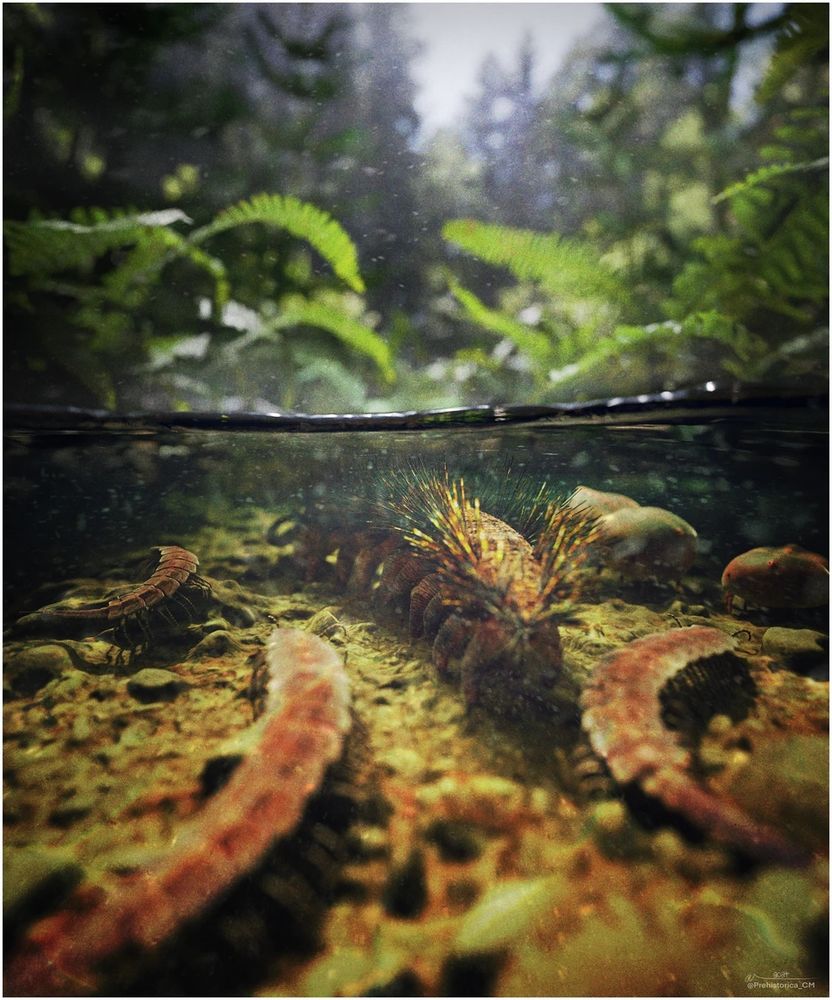
Art by @prehistorica.art
Palaeocampa is an exceptional lobopodian - it lived in rivers and lakes, bristled with thousands of poisonous spines, and more. 🧵
Open access: nature.com/articles/s42...

phys.org/news/2025-07...

phys.org/news/2025-07...
Palaeocampa is an exceptional lobopodian - it lived in rivers and lakes, bristled with thousands of poisonous spines, and more. 🧵
Open access: nature.com/articles/s42...

Palaeocampa is an exceptional lobopodian - it lived in rivers and lakes, bristled with thousands of poisonous spines, and more. 🧵
Open access: nature.com/articles/s42...


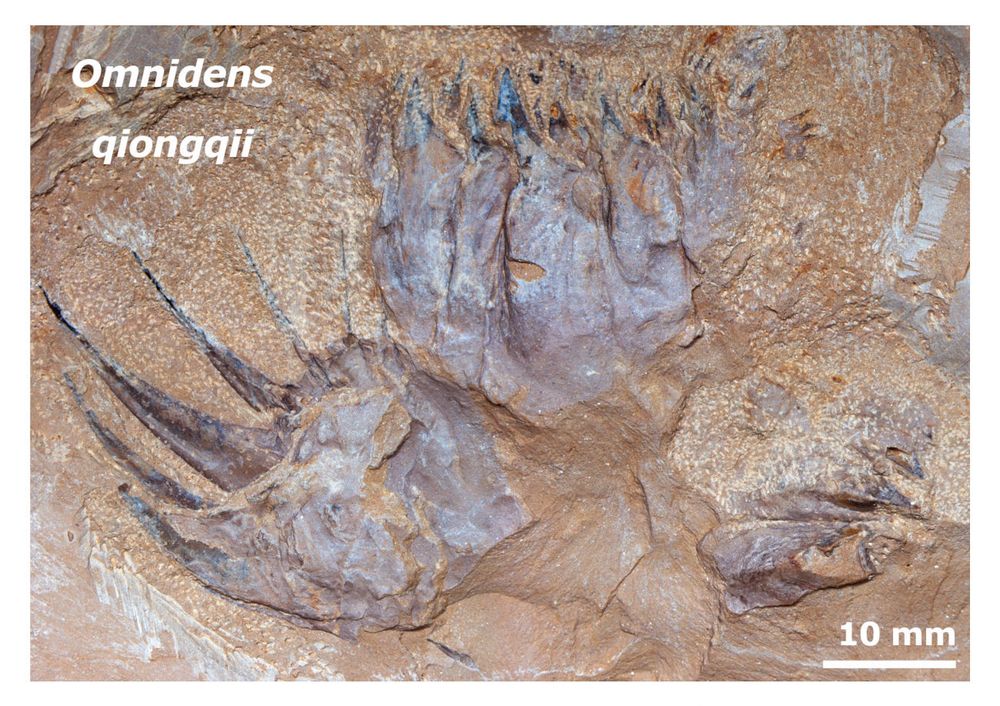
A daytime predator, Pulmonoscorpius was equipped with large compound eyes on the sides of its head, and an enormous stinger. Here, it blends in with the forest, eating a lizard-like Westlothiana.
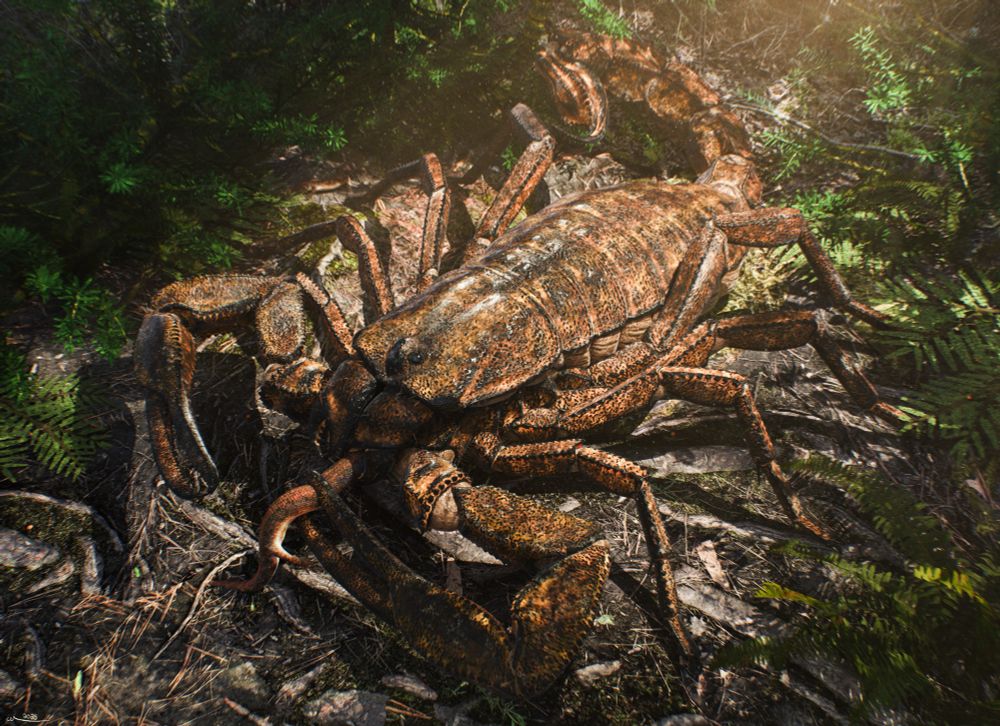
A daytime predator, Pulmonoscorpius was equipped with large compound eyes on the sides of its head, and an enormous stinger. Here, it blends in with the forest, eating a lizard-like Westlothiana.
Comment on: Omnidens appendages and the origin of radiodont mouthparts
Are there really 2 species of Omnidens? I comment on the organization of the mouth of this Cambrian apex predator, and argue there is only one species, Omnidens amplus.
onlinelibrary.wiley.com/doi/epdf/10....
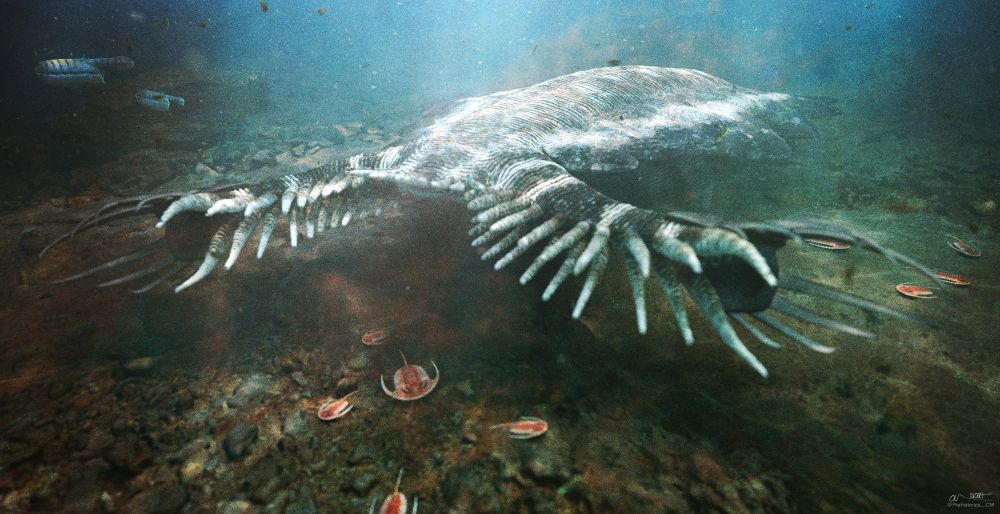
Comment on: Omnidens appendages and the origin of radiodont mouthparts
Are there really 2 species of Omnidens? I comment on the organization of the mouth of this Cambrian apex predator, and argue there is only one species, Omnidens amplus.
onlinelibrary.wiley.com/doi/epdf/10....
